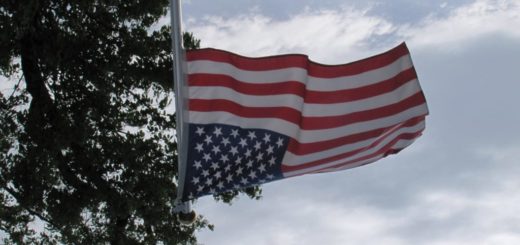New Yorker Sends America to the Black Lodge
Among the weirder conceits of the once charming, now aggressively meaningless TV drama Twin Peaks, is the deus ex machina of the Black Lodge, a place of mock native legend, where people confront their own darkest fears, or meet doppelgängers who will live out alternative versions of their lives. The New Yorker has just sent America to the Black Lodge.
For some reason, presumably a strange form of sadomasochism, that famous magazine aimed exclusively at pseudo-intellectual snobs — the publication that virtually single-handedly defined the concept “middlebrow” — has gone all David Lynch on its readers, and its nation (i.e., New York), choosing to reveal the cover they had planned for their first issue after Hillary Clinton’s election victory. Take a moment and look at it here, if you dare. (As the native American sheriff’s deputy warned during Twin Peaks’ initial introduction to the Black Lodge a quarter century ago, if you enter this place with imperfect courage, it will “utterly annihilate your soul.” No doubt about it.)
Yes, that’s a svelte, tallish, elegant-looking blond woman baying at the moon — er, I mean looking at the night sky through the Oval Office window, where a huge full moon greets her. (One is half-tempted to wonder whether the artist had to remove the moon’s happy face for this melancholic postmortem edition.)
Okay, perhaps it’s being too literal-minded to note that there was no full moon on election night 2016, or any other night that week. Otherwise, I have to say that apart from the unrecognizability of the woman standing alone with her hand on the very chair where Hillary’s husband used to sit while being serviced by interns, the image is somewhat appropriate.
Reagan promised “morning in America.” Hillary’s presidency, by contrast, would definitely have signalled a dark night for the country.
Hillary seemed during the campaign to no longer have the physical strength to keep herself upright without artificial support. Hence, she is holding onto a chair even during the stationary act of staring out the window.
A full moon is the sight at which people gaze before being transformed into werewolves — certainly an apt image for Hillary Clinton, who made a career entirely out of residual sympathy as a poor, mistreated waif, while in fact being a power-mongering, bloodthirsty harpy without an ounce of integrity, empathy, or conscience in what passes for her soul.
Notice the red curtains bordering the window through which this alternative Hillary is gazing. In Twin Peaks iconography, those curtains are a dead giveaway that we are in the Black Lodge, and that this entity being passed off as “the first woman President” is actually “Bob,” the personification of the evil that men do. It’s a time-warped nightmare vision far more effective, because more believable, than anything David Lynch ever concocted in his off-the-rails TV series. This doppelgänger America really almost happened.
In a strange sense, it may even be happening, insofar as the entity to whom Hillary lost the election was a long-time friend and donor of hers, and when push comes to shove shares most of her views on policy matters and New York values — not to mention sharing her fundamental political philosophy, i.e., unprincipled self-promotion.
The New Yorker, apparently disappointed, like other viewers, with the perplexing final scene of Twin Peaks: The Return, has decided to offer its own version, packing a jolt of fear far more effective than the one Lynch produced. If we imagine the New Yorker’s President Hillary cover as the show’s final “reveal,” suddenly that controversial ending makes perfect sense.


